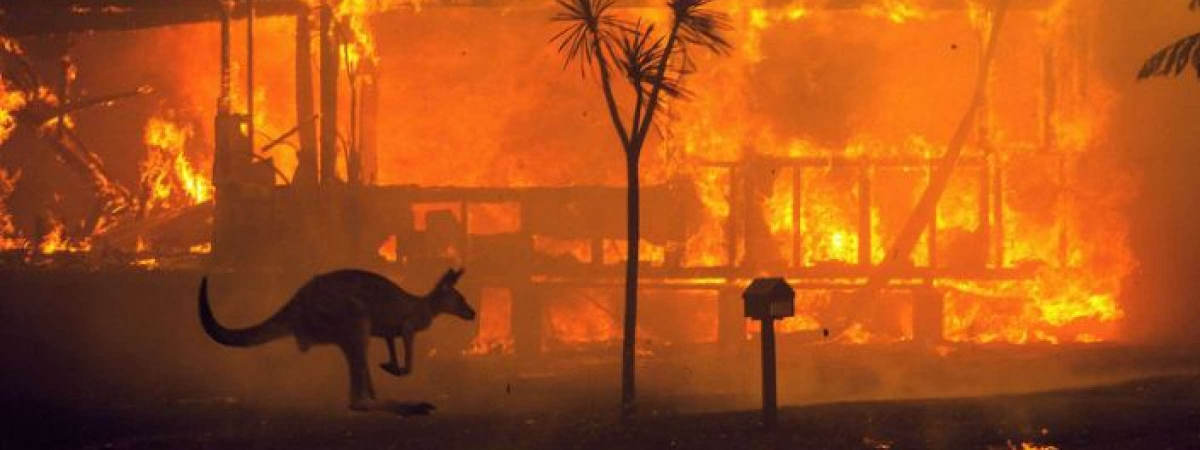Australia's rugged landscapes are not only a source of breathtaking beauty but also a significant challenge when it comes to fire safety and prevention, especially in rural areas. The unique characteristics of the Australian environment make it prone to bushfires, and the stakes are high. It’s important we all gain an understanding of the critical importance of fire safety and prevention measures, focusing on rural areas in Australia.
The Australian Landscape: A Fire-Prone Environment
Australia is known for its vast expanses of dry bushland and forests. The dry climate and hot summers create ideal conditions for bushfires (wildfires in the US). These fires can spread rapidly, fueled by dry vegetation and strong winds. In rural areas, the risk of bushfires is particularly high due to the presence of more flammable vegetation and the remoteness of many communities.
The Impact of Bushfires
Bushfires in rural Australia can have devastating consequences. They pose a significant threat to human lives, property, livestock, and the environment. Entire communities can be at risk, and the damage can be extensive. For rural property owners, the loss of homes, agricultural resources, and infrastructure is a substantial concern.
The Australian fires in the summer of 2019-2020 burnt an estimated 24,000 square kilometres, destroyed over 3,000 buildings and killed at least 34 people.
The scale of one season of bushfires highlights the problem: Fires raged across multiple regions of NSW, and Victoria. Multiple states of emergency were declared across both states and ACT. Reinforcements from all over Australia were called in to assist fighting the fires and relieve exhausted local crews in NSW. The Australian Defence Force was mobilised to provide air support to the firefighting effort and to provide manpower and logistical support. An air tanker and two helicopters crashed during operations, killing three crew members. Two fire trucks were caught in fatal accidents, killing three firefighters. International aid in the form of supplies, equipment and crew were received to help fight the fires.
Fire Safety Measures in Rural Australia
Given the high risk of bushfires, fire safety and prevention measures are of paramount importance. Here are some key aspects of fire safety in rural Australia:
Clearing Vegetation: Property owners often engage in vegetation management, such as clearing debris and creating firebreaks, to reduce the available fuel for fires.
Early Warning Systems: Installing early warning systems, such as fire detection cameras and sirens, can provide crucial alerts about nearby fires.
Fire Suppression Systems: Systems like Blazehield can be pivotal in protecting property, especially in rural areas. By using a mist-based system, BlazeShield reduces water consumption by 50% and minimises the risk of flare-ups - critical issues in rural areas.
Bushfire Survival Plans: Rural property owners must have a well-defined bushfire survival plan. This plan outlines actions to take when a bushfire threatens the property, including evacuation procedures and communication strategies.
Education and Training: Rural communities often offer fire safety education and training programs to ensure that residents are well-prepared for fire emergencies.
The Role of Technology in Fire Safety
In rural areas, where resources can be limited, technology plays a significant role in enhancing fire safety and prevention efforts. BlazeShield's remote activation management system, for example, offers an efficient means of monitoring and suppressing fires. This kind of technology empowers rural property owners and emergency services to respond quickly and effectively to fire incidents.
The Importance of Community Engagement
Fire safety in rural areas is not solely the responsibility of property owners. It is a collective effort that requires community engagement. Rural communities often come together to create volunteer fire brigades, conduct fire drills, and share information about fire safety measures. Community support is essential for both prevention and response.

The importance of fire safety and prevention in rural Australia cannot be overstated. With the unique fire-prone environment, the stakes are high, and the consequences of neglecting fire safety measures can be catastrophic. However, individual property owners, communities, and technology providers must all work together to mitigate the risks and protect lives and property from the devastating impact of bushfires. By embracing fire safety as a shared responsibility, rural Australia can better prepare itself for the fire challenges it faces.
For more information and tips on fire suppression, look at some information on our website, www.blazeshield.com

